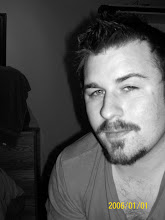Monday, March 29, 2010
The evolution of Lucia
This woman just brutally murdered her newly wedded husband on their wedding night in a fit of misguided rage. She is Lucia from Lucia di Lammermoor, an 1835 dramatic opera by Gaetano Donizetti.
This alone would normally be enough to captivate my interest long enough to blog about Opera, but then I found this version of the same Lucia aria, by Russian singer Vitas
A masculine soprano, indeed. Minus the blood but added the bling. Yet it ends not here. I then discovered that the alien opera performance from the 1997 sci-fi The Fifth Element draws directly from Lucia.
From early 19th century Italian performances, to the tentacle headed blue alien (non Nav'i) version, the opera remains effective through it's key feature: the voice. Called Bel Canto, meaning literally 'beautiful voice' in Italian, the vocal style found commonly in opera is the focal point of the performance, often driving narrative and putting homophonic instrumentation in a very supporting role.
As you can see, as evidenced by all performances of Lucia throughout the galaxy, the singer's range is used quite extensively. Bel Canto relies on the expert legato (Italian: tied together) of movement throughout the vocal range.
Il Dolce Suono, the title of the above performances, is what is known as an aria. In the operatic style, vocal performances are typified as either recitative (lyrics sung in order to advance the plot, in imitation of speech), or arias. The aria allows a single voice to express in a more structured style than recitation, giving it the ability to convey an important theme or emotion in the opera.
In these arias, the vocal performers may often embellish upon the written score heavily; compare Vita's to the first video, a Natalie Dissay performance. These embellishments, small trills, placed vibratos, timed emphases, allow the aria performance to be the star attraction; a showcase of the Bel Canto abilities of the headlining voice, and the reason the drama is dramatic; the comedy, comedic. It's what makes opera work. Even Bruce Willis was moved.
Subscribe to:
Post Comments (Atom)

It's really interesting that you found three different versions of the same aria and they are all uniquely sung. Apart from the Bel Canto in all three, the facial expressions of the performers also gives the aria a better form of expression and adds to the emotion.
ReplyDelete